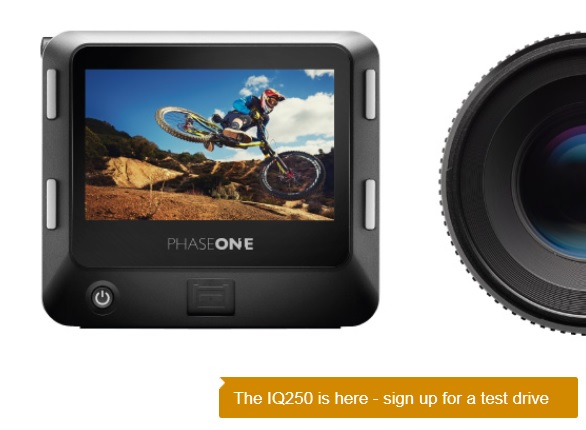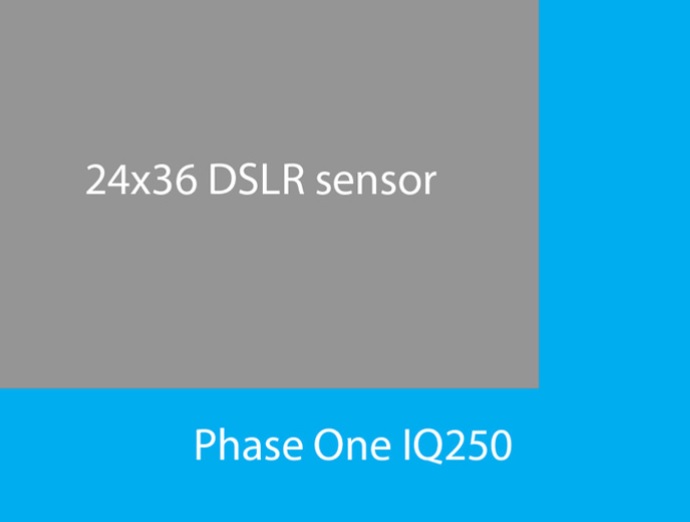It was hard to miss that this announcement was coming sooner than later, and photo rumors tagged this correctly. On Friday the 24th of January 2014 with the IQ250, Phase One has set the wheels in motion that will change Medium Format Digital forever with the introduction of a CMOS Medium format back.
There are several good reviews up, but most of these are sponsored by the Phase One corporation and they rightly so are keeping this back close to home. I am sure they have made a huge investment in bringing this technology to market, and also by having the back available to ship on Monday the 27th of January. This is unheard of with any previous Phase One back announcements.
One of the best overviews I have seen so far is the blog post by Digital Transitions which shares the 11 most important things you need to know about the IQ250 which can be found here: Phase One IQ250.
As a photographer who has owned several Phase One backs since 2008, I have to agree this is probably one of the most important announcements that Phase One has made in that time frame. The reason is that with this announcement, Phase One is beginning to shift to CMOS for their chips. In this case the chip partner is Sony not Dalsa. However I would not rule out Dalsa in the future from coming out with a new medium format CMOS chip line. Dalsa gave Phase One a bridge to this point with the new chip that was developed for the IQ260 and brought to the market in mid 2013. However this chipset (which brought back the ability to have 1 hour exposures again) still has some of the basic limitations of all CCD technology. Example of this are severe Live View limitations and lack of high iso support in full resolution.
Sony shocked the world in January of 2012 with their announcement of the Nikon D800 at 36MP. The results of this chip in a 35mm camera were most impressive. Simply stated, you now had the ability to push a photo taken a base of 100 as much as 2.75 stops and at times 3.25. This advantage was made clear to me once I worked with a few Nikon files. The range that these files have is impressive and when pulling up shadows for the first time you don’t see the color noise and banding that was common with earlier CMOS chips from both Canon and Nikon. The ability to do this is a combination of the 36MP chip and Sony’s exmoor processor.
Now Phase One has taken this up a notch and brought this same technology to the world of Medium Format.
Notice the difference in overall dimensions between a 35mm full frame chip and the IQ250. You are gaining over 1/3 more image area. In this case the largest 35mm digital sensor currently is the Nikon 36MP chip and now Phase One has produced a back with 50MP and with CMOS.
What are some of the benefits that are immediately apparent?
- Live View will work as it does on all 35mm cameras. Phase One claims 24fps on theirs and this should be enough to allow the user to zoom into 100% to check focus. I only hope that Phase One implements their version of Live View so that your get a stop at 100% magnification. Nikon’s Live View Magnification zooms seems to zoom past 100% and makes the user have to back it off a bit before it’s possible to really see anything of usefulness.
- High ISO capability should now be vastly improved. Phase One limits this back to 6400 ISO, which for me is plenty. I have yet to see any file from any camera rated higher that is really worth that much. In the past Phase One allowed a very good ISO 1600 and decent ISO 3200 on their CCD backs by using sensor plus which utilized pixel binning. The result gave a much cleaner file but also cost the photographer 3/4 of the overall resolution. Thus a 60MP back output became 15MP. The only back where I saw this as a true advantage was on the IQ280.
- 14 stops of dynamic range. Most impressive and 1 full stop better than what Phase One claims for both the 60MP and 80MP backs.
- A faster frame rate and 2GB of on board memory to assist with processing and Live View generation
- Long exposures of up to 1 hour are available at any rated ISO. However I would also assume that as you approach ISO speeds past 400, noise will start to degrade the image just as it does with 35mm digital. A 1 corresponding dark frame is still required.
- Ability to work with all the current line of Phase One/Mamiya Medium format 645 lenses, including the more advanced LS (leaf shutter) Schneider lenses sold exclusively by Phase One.
As is shown in this image, the overall size of the new IQ250 is smaller than the older 60MP and 80MP backs, by about 30%, but it should still offer some great new opportunities for photographers in the near future. When Phase One brings out their replacement for the DF+ camera body things will really start to get interesting for sure.
More information about the new IQ250 can be found in either of the links below:






Recent Comments